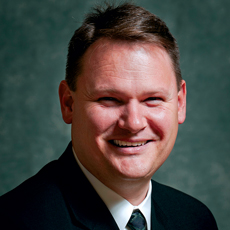
In my experience as the executive director of Hamilton County’s only life care retirement community, which is the The Barrington of Carmel in Indiana, I have noticed the way many interchange “life care communities” with “continuing care retirement communities.” However, these are two different concepts with distinguishing factors.
Older adults looking for where to retire today are attracted to the idea of empowerment, continued independence and the ability to make their own decisions about what exactly they want. The Barrington is focused on empowering seniors by equipping them with knowledge and a better understanding of the differences between a life care community and a continuing care retirement community so that they feel confident in their ability to make the best decision for themselves.
The decision about where to retire and receive care is an enormous one, and no one should have to make that choice without full knowledge of what is or is not involved. Because the notion of life care can be overwhelming and confusing to not only the seniors, but also the family members and caregivers, The Barrington, sponsored by Senior Quality Lifestyles Corp., has found it effective to educate the public on this topic on a regular basis.
A CCRC is a specific type of senior living community that could provide either a full or a partial continuum of care in order to meet the residents’ healthcare needs throughout the aging process. In contrast, a life care community offers a full continuum of care and involves a life care agreement that guarantees a fixed/predictable monthly service fee. A CCRC’s monthly fee increases with the higher levels of care required. Such services covered by the monthly fee include meal plans, housekeeping, scheduled transportation, maintenance-free living and planned social, educational and cultural activities and events.
Life care is a comprehensive, unique concept with major benefits that enable individuals to focus on their current level of health while building in a crucial level of financial protection to safeguard against future medical needs. Life care helps to keep one’s budget in order and guarantees access to long-term health care. It allows individuals to age in place and access, if necessary, every aspect of health services from assisted living to memory support to skilled nursing at any point in their lives. In addition, life care residents are guaranteed estate protection through an entry fee (a deposit) that is up to 90% refundable to the resident or the resident’s estate. This one-time payment is based on the size of the residence chosen and entitles the individual to lifetime residency as well as the availability of long-term care.
In addition, long-term care insurance in most cases will work well with life care and pay earned benefits directly to the resident. As with all insurance matters, consulting with the insurance carrier or agent for specific answers regarding each individual policy is necessary.
The key to life care is that it is lifelong care, meaning that one is protected for life — regardless of what happens to one’s financial status. If life care residents outlive their resources for reasons outside of their control and are unable to pay the monthly service fee, they are still guaranteed residency and priority access to onsite long-term health care.
Here are tips and examples of what we at The Barrington have done to help educate:
- Provide educational opportunities for not only for residents but outside guests. Invite people to learn more about what is available to them through “Lunch & Learns” on-site or at a popular local restaurant.
- Host specific seminars and guest speakers. This builds credibility. We recently welcomed John C. Spooner, vice chairman and chief executive officer for Greystone Communities, Inc., to discuss the concept in-depth and answer questions about life care specifically. It wasn’t just another staff member at The Barrington giving information and selling an apartment. Greystone Communities, Inc. has been a trusted advisor in senior living since 1982. Greystone advises senior living organizations in strategic planning, project planning, business improvement, repositioning, development, marketing and management of continuing care retirement communities.
- Don’t forget your own residents. We include our residents in the opportunities provided because we realize they may have moved in already, but they often still don’t know about the options or fully understand what’s involved in a “life care” community. We have a Masterpiece Living committee made up of residents who help organize workshops for fellow residents to ensure they are and/or remain informed.
While it all may seem complicated, after a little explanation, I find that most people understand the options in the retirement community world.
Knowledge is power, and we want to help our seniors and the overall public to become more knowledgeable. That will empower them to make the important decisions that everyone faces in the aging process.
Troy Cannaday is the executive director at The Barrington of Carmel, which opened last year. He has more than 21 years of experience working in the senior living industry.
This article originally appeared on McKnight's




